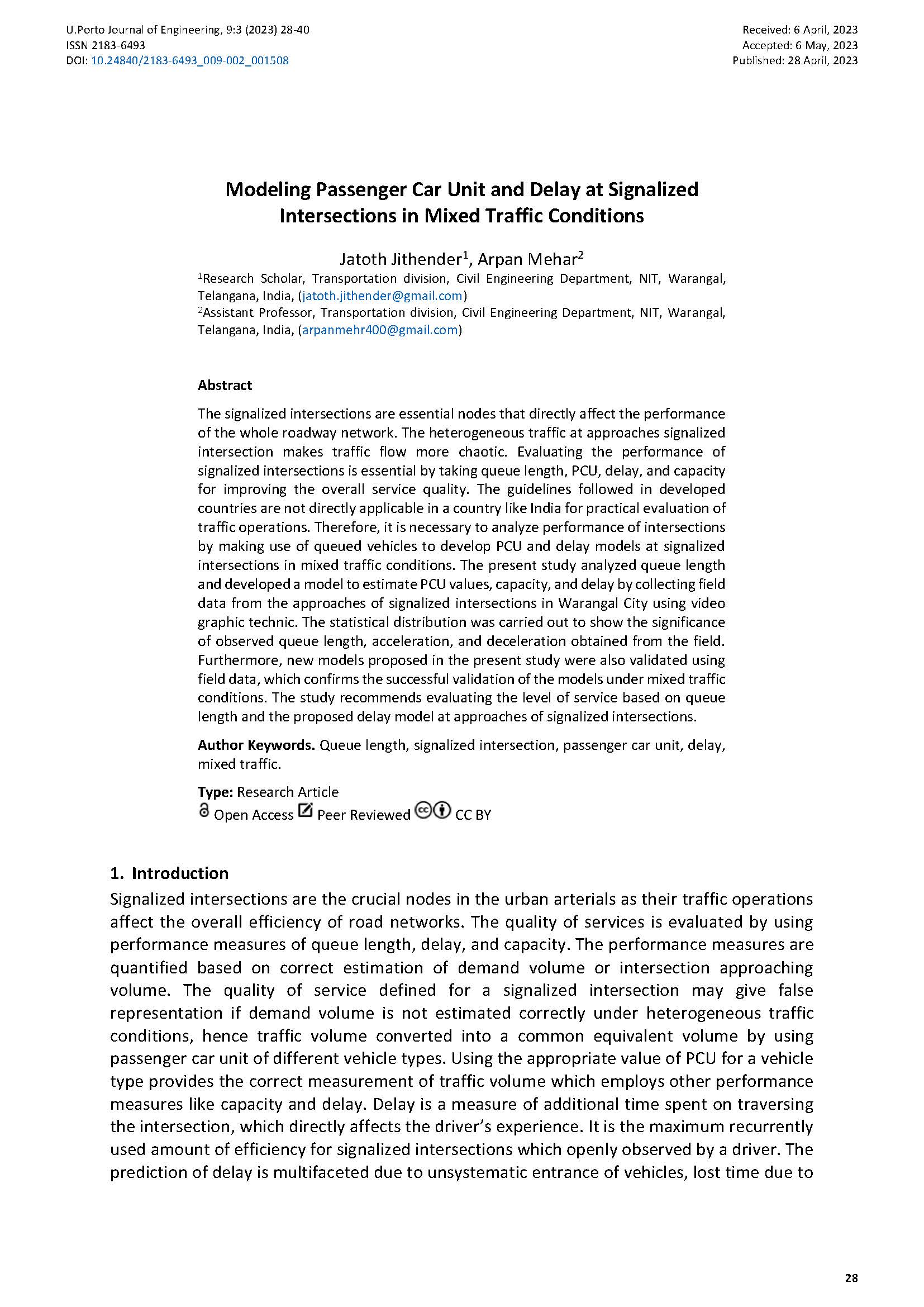Modeling Passenger Car Unit and Delay at Signalized Intersections in Mixed Traffic Conditions
Main Article Content
Abstract
The signalized intersections are essential nodes that directly affect the performance of the whole roadway network. The heterogeneous traffic at approaches signalized intersection makes traffic flow more chaotic. Evaluating the performance of signalized intersections is essential by taking queue length, PCU, delay, and capacity for improving the overall service quality. The guidelines followed in developed countries are not directly applicable in a country like India for practical evaluation of traffic operations. Therefore, it is necessary to analyze performance of intersections by making use of queued vehicles to develop PCU and delay models at signalized intersections in mixed traffic conditions. The present study analyzed queue length and developed a model to estimate PCU values, capacity, and delay by collecting field data from the approaches of signalized intersections in Warangal City using video graphic technic. The statistical distribution was carried out to show the significance of observed queue length, acceleration, and deceleration obtained from the field. Furthermore, new models proposed in the present study were also validated using field data, which confirms the successful validation of the models under mixed traffic conditions. The study recommends evaluating the level of service based on queue length and the proposed delay model at approaches of signalized intersections.
Downloads
Article Details

This work is licensed under a Creative Commons Attribution 4.0 International License.
Authors who publish with this journal agree to the following terms:
- Authors retain copyright and grant the journal right of first publication with the work simultaneously licensed under a Creative Commons Attribution License that allows others to share the work with an acknowledgement of the work's authorship and initial publication in this journal.
- Authors grant the journal the rights to provide the article in all forms and media so the article can be used on the latest technology even after publication and ensure its long-term preservation.
- Authors are able to enter into separate, additional contractual arrangements for the non-exclusive distribution of the journal's published version of the work (e.g., post it to an institutional repository or publish it in a book), with an acknowledgement of its initial publication in this journal.
- Authors are permitted and encouraged to post their work online (e.g., in institutional repositories or on their website) prior to and during the submission process, as it can lead to productive exchanges, as well as earlier and greater citation of published work (See The Effect of Open Access).

